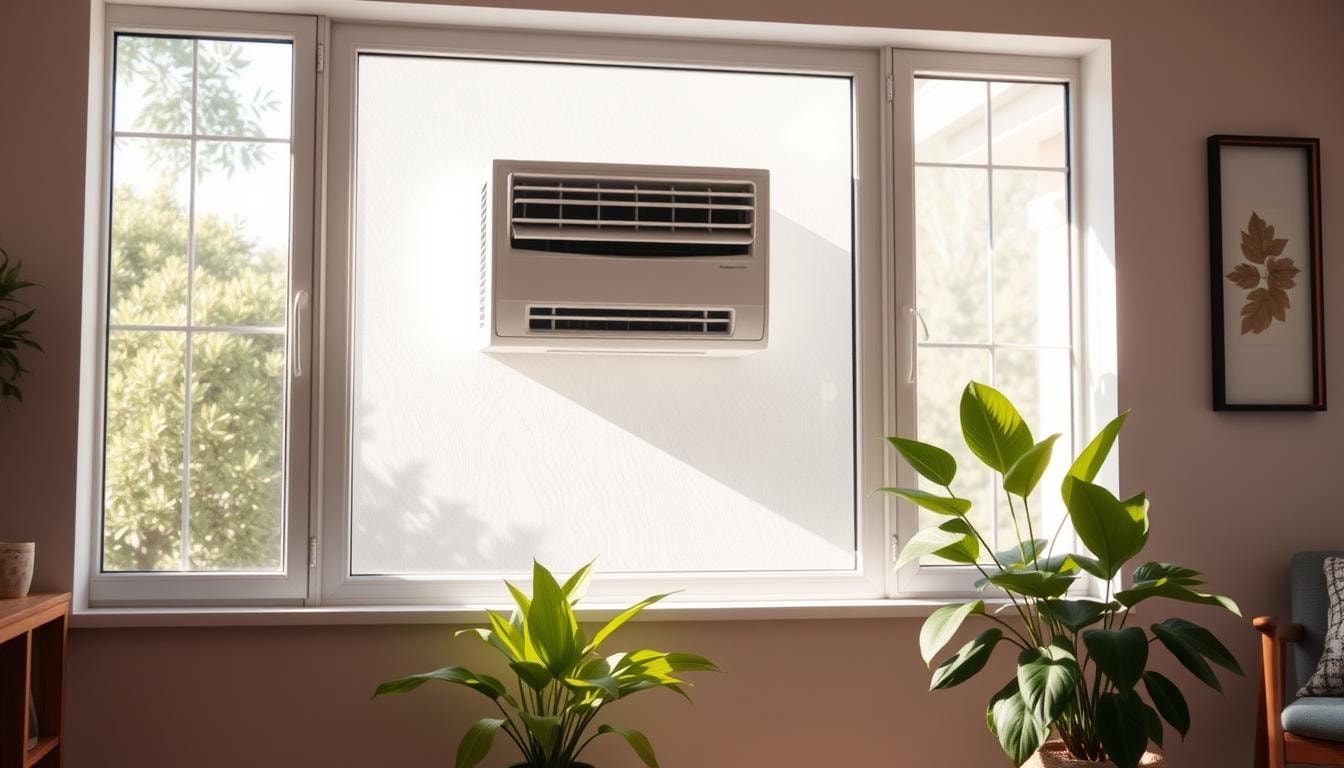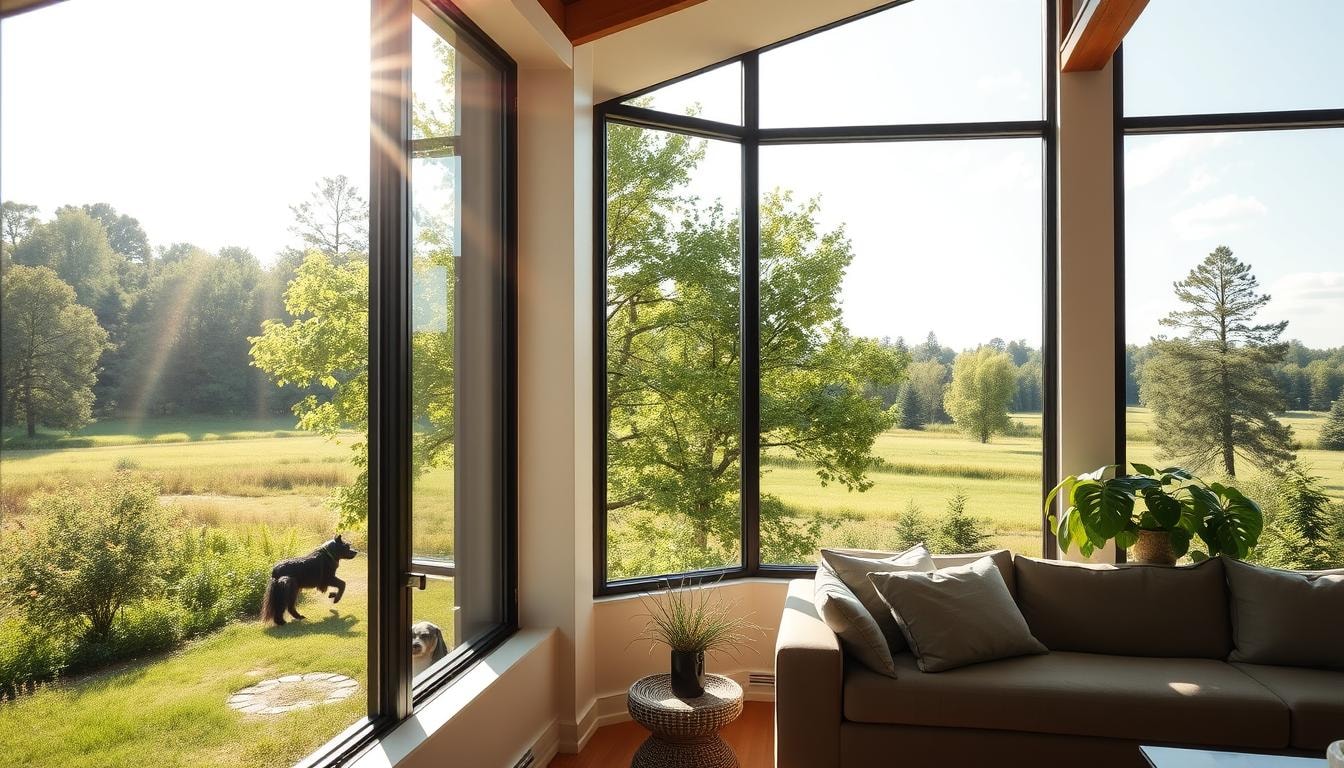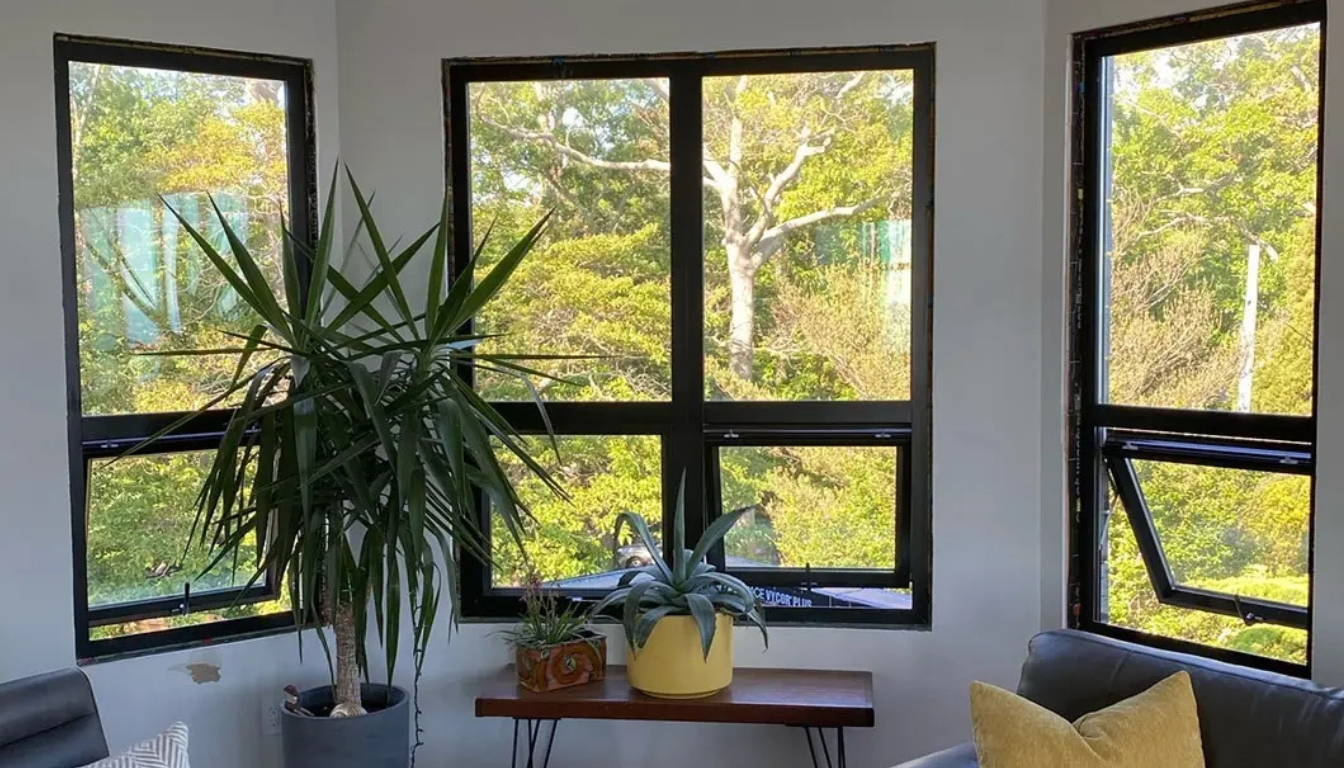
How to Measure a Window for an Air Conditioner: Complete Guide
Measuring windows right is key to picking the best air conditioner. This guide talks about room size, climate, insulation, and sun exposure. It shows how to measure window sizes, figure out room square footage, and find the right BTU for cooling.
Key Takeaways
- Properly measure window dimensions to ensure a proper fit for your window air conditioner
- Calculate the room square footage to determine the appropriate BTU cooling capacity needed
- Consider electrical requirements and power source when selecting a window AC unit
- Understand common window styles and any special measurement considerations
- Avoid common measurement mistakes to ensure a secure and efficient window AC installation
Understanding Window Air Conditioner Basics
Window air conditioning (ac) units are key for cooling your home. They are sized in British Thermal Units (BTUs). This shows how much heat they can remove in an hour. Sizes range from 5,000 BTU for small rooms to 12,000 BTU for bigger ones.
Types of Window AC Units
There are many types of window ac units. They vary from simple to smart models. You can pick one that fits your cooling needs. They usually are 18 to 28 inches wide.
Common Window Styles for AC Installation
The most common window for ac units is the double-hung. These windows have two parts that slide up and down. They are safe and work well for ac units. Other windows, like sliding and casement, can also fit ac units but need different setups.
Basic Terminology You Should Know
- BTU: British Thermal Unit, a measure of an ac unit’s cooling power
- Minimum Window Dimensions: The required width and height for a window to properly fit an ac unit
- Cooling Power: The ability of an ac unit to lower the temperature in a room or space
- Double-Hung Window: A type of window with two sashes that slide vertically
Knowing these basics helps you pick the right ac unit. It also makes sure your window ac installation goes smoothly. This is true whether your space needs a lot of cooling or not.
Essential Tools and Materials Needed for Measurement
Measuring your window frame right is key when picking the perfect air conditioner size. You’ll need a few important tools for this. A metal measuring tape is the most crucial. It gives you the exact measurements for your window and the air conditioner.
Other tools can also be useful:
- Pencil and paper for recording the measurements
- Smartphone or computer for quick calculations and reference
- Flashlight or headlamp for better visibility in dimly lit areas
- Level to ensure accurate measurements and proper AC installation
With these tools, you can easily measure your window frame. This helps you pick the right air conditioner size for your room. Getting the measurements right is vital to avoid any problems with your new AC unit. By using the right tools, you’ll have a smooth and successful installation.
How to Measure a Window for an Air Conditioner
Measuring your window right is key when picking the right window air conditioner (AC) size. You need to know the width, height, and depth. Taking these measurements correctly ensures your AC fits well and works best.
- Measuring Window Width: To measure the width, open your window all the way. Measure from the inside of the left side to the inside of the right side. This tells you how wide the AC can be.
- Measuring Window Height: Then, measure the window’s height from the bottom to the top. This tells you how tall your AC can be.
- Determining Window Depth Requirements: The window’s depth is also important. It affects the AC size you can choose. Measure from the inside of the window to the outside. This helps pick an AC that fits your window well.
By measuring your window’s width, height, and depth right, you can find the perfect AC size. It will cool your space well and fit perfectly.

Calculating Room Square Footage
Finding the square footage of a room is key to picking the right room ac unit. This step makes sure the ac can cool the entire room well. For a rectangular room, just multiply the length and width in feet.
For triangular rooms, multiply the length and width, then divide by 2. If your room is more complex, break it into smaller shapes. Then, add up the square footage of each part.
This method gives you the total sq ft of the entire room. Getting the room’s measurements right is vital for picking the right room ac unit.
- Measure the length and width of the room in feet.
- For rectangular rooms, multiply the length by the width to get the square footage.
- For triangular rooms, multiply the length and width, then divide by 2.
- For complex shapes, divide the room into smaller sections and add the individual square footages.
- The total square footage is crucial for determining the correct room ac size.
Getting the sq ft of the room right is important. It makes sure the room ac unit you choose can cool the room well. This brings comfort and efficiency to your space.
Understanding BTU Requirements
Choosing the right air conditioner for your home is key. British Thermal Units (BTUs) measure cooling capacity. The correct BTU rating is vital for good performance and saving energy.
BTU Calculation Formula
For effective cooling, you need about 20 BTUs per square foot. But, this is just a starting point. Adjustments are needed based on room size, sun exposure, and how often it’s used.
Room-Specific BTU Adjustments
- Increase BTUs by 10% for rooms with high sun exposure
- Decrease BTUs by 10% for rooms with ample shading
- Add 600 BTUs per additional person in the room
- Increase BTUs by 4,000 for air conditioners installed in kitchens
After adjusting, round down to the nearest thousand BTUs. The right BTU capacity ensures your air conditioner cools well and saves energy. It’s a good starting point for finding the right BTUs for your space.
Electrical Requirements and Power Source Assessment
When you install a window air conditioner, make sure your home’s electrical system can handle it. Window ACs need 115-volt or 230-volt circuits to work well. Smaller units, up to 15,000 BTU, use 115-volt circuits. But, bigger models might need 230-volt circuits.
- Voltage Requirements: Before buying a window AC, check your home’s electrical setup. Make sure your power source can meet the unit’s voltage needs. This step prevents overloading your circuit and keeps you safe.
- Circuit Capacity Considerations: Think about the circuit capacity needed for your window air conditioner too. For big units, having a dedicated circuit is best. This avoids overloading and keeps your system running smoothly, even with extra people or appliances.

Knowing your electrical needs and ensuring your power source fits the AC’s requirements is key. This way, you can safely and efficiently add the unit to your home. It will work better and use less energy.
Safety and Security Factors
When you put in a window air conditioner, safety and security are key. The window frame needs to be strong enough for the AC’s weight. Also, make sure the installation follows local building codes.
For big AC units, people regularly occupy the area around them. You need to use support brackets or L-brackets. This keeps the unit from tipping or falling out of the window. It also keeps everyone safe and the AC unit from getting damaged.
- Seal any gaps around the window frame and the AC unit. This stops air leaks and boosts energy efficiency.
- Don’t block emergency exits or make it hard to get to the window with the ac size.
- Think about adding window locks or security bars. This is good if the AC unit is on a ground-floor window to stop break-ins.
Keeping the AC unit clean and well-maintained is also crucial. Make sure it’s grounded and connected to a dedicated electrical circuit. This helps avoid fires and electrical problems.
By focusing on safety and security during installation, you can enjoy your window air conditioner. This way, you don’t risk your home or its occupants.
Additional Measurement Considerations for Special Windows
When you put in a window air conditioner, think about your window type. Some windows need special measurements or solutions for a good fit. Let’s look at three common types: double-hung, sliding, and casement.
- Double-Hung Windows: For double-hung windows, measure the lower sash’s opening. You need to know its width and height. Remember, window frames or sashes might block the opening or size window needed for the air conditioner.
- Sliding Windows: Sliding windows need a different approach. The window opening width is key. You might need special kits or adaptors for a secure install.
- Casement Windows: Casement windows open outward and might need custom solutions or portable air conditioners. Measure the opening’s width and height. But, the hinged design might not work with standard air conditioners. Check the manufacturer’s specs to see if your double hung window fits the air conditioner you want.
Always check the manufacturer’s guidelines for your window type. Good preparation and attention to detail are key for a successful installation. This will help meet your cooling needs.
Common Measurement Mistakes to Avoid
Getting your window’s measurements right is key for a good fit with a new air conditioner (AC) unit. But, many people make mistakes that can cause problems. Here are some common errors to watch out for:
- Measuring the whole window frame instead of just the opening. This can make the AC unit too big or too small.
- Not counting the depth of the window sill. Missing this can cause issues with the AC’s installation and airflow.
- Ignoring things like radiators, furniture, or other items that might block the AC’s place and work.
To avoid these mistakes, always double-check your measurements. Also, make sure to look at the AC unit’s specs. This will help you get the right size and cooling for your space.
Also, remember that different window types need different measuring methods. Double-hung, sliding, or casement windows are examples. Reading the manufacturer’s guide or getting help from a pro can make measuring easier.
Get the Perfect Fit with Budget Windows
Choosing the right size air conditioner is critical for keeping your home comfortable. Our experts at Budget Windows can help you determine the perfect BTU capacity based on your room size, sun exposure, and other factors. Whether you need more cooling power for a large open floor plan or want to reduce capacity for a heavily shaded area, we’ll provide a great starting point.
We’ll also ensure the air conditioner fits your window’s maximum width and meets the manufacturer’s specifications for humidity, panels, and access. Don’t settle for anything less than a comfortable temperature – contact Budget Windows today, and let our team help you find the ideal air conditioning solution for your home, no matter if it’s for more than two people or a sunny space.
Conclusion
Measuring and sizing a window air conditioner is key for good cooling and saving energy. Think about room size, window size, BTU needs, and electrical specs. This helps pick the best AC for your space, keeping you cool and saving money.
A well-installed window air conditioner lasts longer, saves energy, and is easier to maintain. Follow the steps and use the right tools and materials for a secure, efficient install. This boosts your AC’s cooling and airflow.
Looking to upgrade or install a new window air conditioner? This guide has all you need to know. It helps you choose wisely and get the cooling comfort you want. By focusing on these steps, you’ll enjoy a cooler, more energy-efficient space and a longer-lasting AC.
FAQs
What are the essential measurements I need to take for a window air conditioner?
The key measurements are the window’s width, height, and depth. Measure the inside of the window frame to get the maximum size window AC that can fit.
How do I determine the appropriate BTU cooling capacity for my room?
Start with about 20 BTUs per square foot of room space. Then adjust up or down based on factors like sun exposure, number of occupants, and room usage.
What should I consider if my windows are not standard double-hung style?
For sliding or casement windows, focus on the window opening width and height. You may need special kits or adaptors to properly size the air conditioner.
How can I boost the cooling power if my room is larger or has high sun exposure?
Increase the BTU capacity by 10% for rooms with heavy sun exposure. For larger rooms, go up to the next higher BTU size to ensure enough cooling power.
What other factors should I keep in mind when selecting a window air conditioner?
Consider the electrical requirements, making sure your power source can handle the AC unit. Also, pay attention to safety and security factors like securing the unit and avoiding blocked access.







